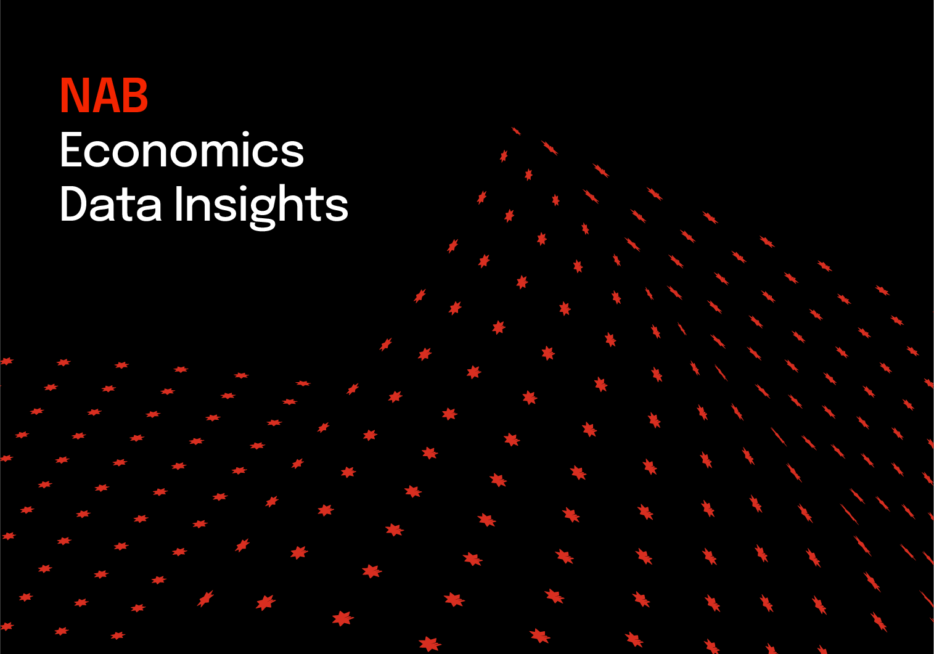Total consumer spending grew 0.7% in July


Insight
Anxiety on the rise despite wellbeing hitting near record high.

How Australians think and feel about their emotional and financial wellbeing
Wellbeing in Australia rose to a near record high in Q3, but 1 in 3 people remain “highly anxious”. NAB’s survey is not designed to detect or diagnose anxiety disorders, but it does suggest a growing number of people are living with a sense of worry. Money seems to help, but not always. While higher incomes don’t necessarily translate into lower anxiety, money does seem to help us cope better. Our latest report also shows around 1 in 3 people experienced some financial stress or hardship in Q3, and nearly half tried to manage by stricter budgeting or cutting unnecessary expenses. But there were also emotional elements, including over 1 in 3 people who withdrew socially.
NAB’s Australian Wellbeing Index rose for the third straight quarter in Q3 2019 to 65.7 points – the second highest reading since the survey began in 2013. Australians reported their highest levels of happiness and life satisfaction in the history of the survey, with life worth also at an equal survey high. Despite these positive trends, one of the four dimensions of the wellbeing index worsened – anxiety. Highly anxious people also ranked their overall wellbeing much lower than those with low anxiety. Not only did overall anxiety rise, but anxiety specifically arising from our current financial position also increased.
Much debate surrounds the question of whether anxiety is on the rise, or do we know more, think more and speak up more about it. Is this “new” wave of anxiety simply the result of being significantly underestimated in the past? Or is this a genuine epidemic, the product of growing pressures of living in our modern society? There are many theories covering everything from loneliness, smaller and more disrupted families, the decline of organised religion, rising debt levels, a change in spending patterns, the rise of social media, the 24-hour news cycle, extended working days, the pace of technological change, to concerns about global warming, terrorism and the rise of political extremism. No one knows for sure.
Anxiety is a vague term. At one end of the scale it may refer to natural concerns and emotions felt prior to an exam or a job interview for example. At the other, it can arrive as a symptom of another mental illness, such as panic disorders, post-traumatic stress disorder, phobias, etc. When anxiety is a person’s primary symptom, it may be referred to as generalised anxiety disorder (GAD). NAB’s survey is not designed to detect or diagnose anxiety disorders or pathological anxiety. But, it does indicate that a growing number of Australians are living with a sense of worry. Many who say they experience high levels of daily anxiety may not meet the criteria for an anxiety disorder but they’re still affected. In fact, more than 1 in 3 Australians in our survey reported having feelings of high anxiety. These people are harder to quantify and can fly under the radar.
In new NAB wellbeing research, we take a closer look at “highly anxious” people. A complex picture emerges, particularly about the relationship between money and anxiety. Our research suggests when compared to people with low anxiety, highly anxious people are well behind in areas such as mental health, standard of living, family and personal relationships, their homes and personal safety. Other areas where there is a big gulf include physical health, concerns about the future, physical appearance, feeling part of their local community and sleep.
Previous NAB research has shown a strong correlation between higher income and higher wellbeing – at least in terms of life satisfaction, life worth and happiness. But, it also shows higher income alone doesn’t translate into lower anxiety. In fact, “average” anxiety levels are rated about the same by Australians in the highest and lowest income bands. These averages do however mask an interesting relationship between financial and personal anxiety – people with high personal anxiety also have much higher levels of financial anxiety, irrespective of income. This suggests financial anxiety can occur at any income level and adversely impact personal wellbeing.
But money does seem to help in other ways.
When highly anxious people were asked how they were “coping”, a different pattern emerges. Highly anxious people on higher incomes (above $100,000 p.a.) say they’re coping much better than highly anxious people on lower incomes (less than $35,000 p.a.). This suggests while money alone doesn’t guarantee a less anxious life, it appears to help anxious people cope.
Poor sleep has been linked to physical problems and mental health issues such as anxiety and depression. New NAB research also shows good sleep is important for overall wellbeing. Australians with low anxiety said they’re sleeping better than those with high anxiety. They also have much higher wellbeing. Higher income earning Australians also reported sleeping better than those on lower incomes.
In other key survey findings:
Learn more in our Australian Wellbeing Survey Q3 2019
© National Australia Bank Limited. ABN 12 004 044 937 AFSL and Australian Credit Licence 230686.